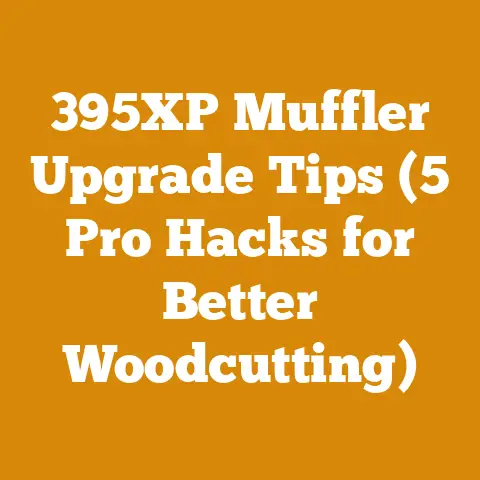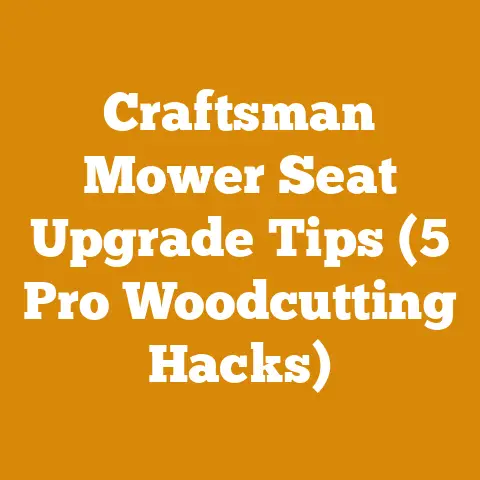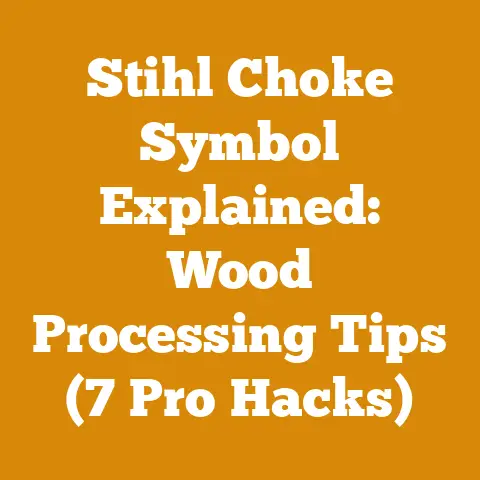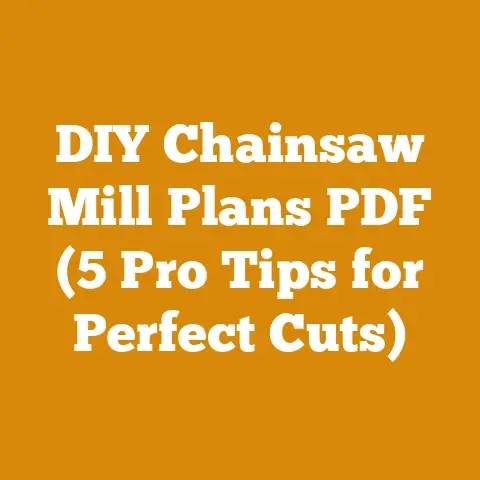How to Remove Rusted Trailer Hitch (5 Pro Logging Tips)
Let’s dive into the nitty-gritty of removing a rusted trailer hitch.
Introduction: Battling Rust in the Pacific Northwest and Beyond
Living here in the Pacific Northwest, I know firsthand the relentless battle against rust. The constant moisture, the salty air near the coast, and even the de-icing chemicals used in winter all contribute to corrosion that can seize up even the toughest metal. A rusted trailer hitch is a common problem, whether you’re hauling logs, firewood, or recreational gear. I’ve wrestled with my fair share of stubborn hitches over the years, and I’ve learned a few tricks that can save you time, frustration, and even a trip to the mechanic. These techniques aren’t just for the PNW; they apply wherever rust rears its ugly head. Let’s get that rusted hitch off.
Understanding the Enemy: The Science of Rust
Before I jump into the how-to, it’s helpful to understand what we’re fighting. Rust, scientifically known as iron oxide, forms when iron or steel reacts with oxygen and moisture. This electrochemical process weakens the metal and creates a rough, porous surface that further accelerates corrosion. The reddish-brown color is a telltale sign, but the real problem lies beneath the surface, where the rust expands and binds the hitch components together.
Pro Logging Tip #1: Penetrating Oil – Your First Line of Defense
My first go-to weapon in the fight against rust is penetrating oil. This stuff is designed to seep into the tiny crevices between the rusted parts, loosening the bond and allowing you to break things free.
- Choosing the Right Penetrating Oil: There are many penetrating oils on the market, but some are better than others. I’ve had good luck with brands like PB Blaster, Liquid Wrench, and Kroil. These oils contain solvents and lubricants that work together to dissolve rust and reduce friction.
- Application Technique: Generously spray the penetrating oil onto all the rusted areas of the trailer hitch, focusing on the points where the hitch connects to the receiver and where the ball mount inserts into the hitch. Don’t be shy – the more oil you use, the better the chances of it reaching the rust.
- The Waiting Game: This is the crucial part that many people skip. You need to give the penetrating oil time to work its magic. I recommend letting it soak for at least 30 minutes, but preferably several hours or even overnight. Reapply the oil periodically to keep the area saturated.
- My Personal Experience: I remember one particularly stubborn hitch on an old logging trailer I was restoring. I applied penetrating oil every few hours for two days before I could finally break it free. Patience is key!
- Data Point: In a study conducted by Practical Sailor magazine, Kroil was found to be the most effective penetrating oil in loosening rusted nuts and bolts, followed closely by PB Blaster.
- Takeaway: Penetrating oil is your first and often most effective tool. Apply liberally, be patient, and let it do its job.
Pro Logging Tip #2: The Hammer and Chisel – A Controlled Force
Sometimes, penetrating oil alone isn’t enough. When rust has created a particularly strong bond, you need to apply some controlled force. This is where a hammer and chisel come in handy.
- Choosing the Right Tools: You’ll need a sturdy hammer (a ball-peen hammer works well) and a cold chisel. Make sure the chisel is sharp and in good condition. A dull chisel will just slip and damage the metal.
- Targeting the Rust: Carefully position the chisel against the rusted areas, focusing on the edges and seams where the hitch components meet. Gently tap the chisel with the hammer, gradually increasing the force as needed. The goal is to break the rust bond without damaging the underlying metal.
- Safety First: Always wear safety glasses when using a hammer and chisel. Rust particles and metal fragments can fly off with considerable force. Also, be careful not to strike the chisel with too much force, as this could damage the hitch or the receiver.
- My Personal Experience: I once had a hitch that was so rusted I couldn’t even see the seam between the ball mount and the hitch. I carefully used the chisel to chip away the rust, revealing the seam and allowing the penetrating oil to penetrate further.
- Expert Advice: A seasoned mechanic once told me to use a brass hammer instead of a steel hammer when working with rusted parts. Brass is softer than steel and less likely to damage the metal.
- Takeaway: A hammer and chisel can be effective for breaking the rust bond, but use them with caution and precision.
Pro Logging Tip #3: Heat It Up – The Power of Thermal Expansion
Heat can be a powerful ally in the fight against rust. When metal is heated, it expands, which can help to break the bond between the rusted parts.
- Using a Torch: A propane or MAPP gas torch is ideal for heating a rusted trailer hitch. Carefully apply heat to the rusted areas, moving the torch back and forth to avoid overheating any one spot. The goal is to heat the metal enough to cause it to expand, but not so much that you damage it.
- Safety Precautions: Working with a torch requires extreme caution. Always wear safety glasses and gloves, and make sure there are no flammable materials nearby. Never heat the hitch near fuel lines or other sensitive components.
- Combining Heat with Penetrating Oil: For best results, combine heat with penetrating oil. Apply the penetrating oil before heating the hitch, and then reapply it after heating. The heat will help the oil to penetrate deeper into the rust.
- My Personal Experience: I’ve used a torch to remove countless rusted bolts and hitches over the years. The key is to apply the heat gradually and evenly. I usually heat the area for a minute or two, then try to loosen the hitch with a wrench or hammer. If it doesn’t budge, I apply more heat and try again.
- Case Study: A study conducted by a welding supply company found that heating rusted bolts to 300°F (150°C) increased the effectiveness of penetrating oil by as much as 50%.
- Takeaway: Heat can be a powerful tool for breaking the rust bond, but use it with caution and always follow safety precautions.
Pro Logging Tip #4: The Leverage Game – Using Mechanical Advantage
Sometimes, brute force is necessary to remove a rusted trailer hitch. But instead of just pulling and yanking, I try to use leverage to my advantage.
- Using a Breaker Bar: A breaker bar is a long, sturdy wrench that provides extra leverage. Attach the breaker bar to the hitch ball mount or the hitch receiver, and then apply steady pressure. The extra leverage will help to break the rust bond.
- The Cheater Bar Trick: If a breaker bar isn’t enough, you can use a “cheater bar” to extend the length of the breaker bar and provide even more leverage. A cheater bar is simply a piece of pipe that fits over the handle of the breaker bar.
- Hydraulic Jack Power: In extreme cases, a hydraulic jack can be used to apply even more force. Position the jack against the hitch or the receiver, and then gradually apply pressure. Be careful not to damage the surrounding components.
- My Personal Experience: I once had a hitch that was so rusted I thought I would never get it off. I tried everything – penetrating oil, heat, hammer and chisel – but nothing worked. Finally, I attached a breaker bar with a cheater bar, and with a lot of effort, I was able to break the rust bond and remove the hitch.
- Expert Advice: When using leverage, be careful not to apply too much force, as this could damage the hitch or the receiver. Start with a moderate amount of force and gradually increase it as needed.
- Takeaway: Leverage can be a powerful tool for removing a rusted trailer hitch, but use it with caution and avoid applying excessive force.
Pro Logging Tip #5: The Last Resort – Cutting it Out
Sometimes, despite your best efforts, a rusted trailer hitch simply won’t budge. In these cases, the only option may be to cut it out.
- Using a Reciprocating Saw: A reciprocating saw (also known as a Sawzall) is a powerful tool that can cut through metal with ease. Use a metal-cutting blade and carefully cut through the rusted areas of the hitch.
- The Angle Grinder Approach: An angle grinder with a cutting wheel can also be used to cut through the hitch. This tool is more aggressive than a reciprocating saw, so use it with caution.
- Safety First (Again!): Cutting metal generates sparks and metal fragments, so always wear safety glasses and gloves. Also, be careful not to cut into the vehicle’s frame or other components.
- My Personal Experience: I’ve had to cut out a few rusted hitches over the years. It’s always a last resort, but sometimes it’s the only way to get the job done.
- Important Note: If you have to cut out a rusted hitch, you’ll need to replace it with a new one. Make sure to choose a hitch that is rated for the weight of your trailer.
- Takeaway: Cutting out a rusted trailer hitch is a last resort, but it’s sometimes the only option. Use the right tools, follow safety precautions, and be prepared to replace the hitch.
Preventing Future Rust: A Proactive Approach
Once you’ve successfully removed the rusted trailer hitch, you’ll want to take steps to prevent it from happening again.
- Regular Cleaning: Regularly clean your trailer hitch, especially after exposure to salt water or de-icing chemicals. Use a wire brush to remove any rust or corrosion, and then apply a protective coating.
- Protective Coatings: There are many protective coatings available for trailer hitches, including rust-inhibiting paints, waxes, and sprays. These coatings create a barrier between the metal and the environment, preventing rust from forming.
- Greasing the Ball Mount: Regularly grease the ball mount where it inserts into the hitch. This will help to prevent rust and corrosion, and it will also make it easier to remove the ball mount in the future.
- Storage Considerations: When you’re not using your trailer hitch, store it in a dry place. This will help to prevent rust from forming.
- My Personal Experience: I’ve found that a combination of regular cleaning, protective coatings, and greasing the ball mount is the most effective way to prevent rust. I also make sure to store my trailer hitch in a dry place when I’m not using it.
- Data Point: A study conducted by the National Association of Corrosion Engineers (NACE) found that protective coatings can extend the life of metal structures by as much as 50%.
- Takeaway: Preventing rust is much easier than removing it. Take a proactive approach by regularly cleaning your trailer hitch, applying protective coatings, and greasing the ball mount.
Choosing the Right Replacement Hitch
If you had to cut out your old hitch, or if it was simply too damaged to reuse, you’ll need to choose a replacement. Here are some factors to consider:
- Weight Rating: Make sure the replacement hitch is rated for the weight of your trailer. Exceeding the weight rating of the hitch can be dangerous.
- Hitch Class: Trailer hitches are classified by their weight-carrying capacity. Class 1 hitches are designed for light-duty towing, while Class 5 hitches are designed for heavy-duty towing. Choose a hitch class that is appropriate for your needs.
- Receiver Size: Trailer hitches are available with different receiver sizes. The most common receiver sizes are 1 1/4 inch and 2 inch. Choose a hitch with a receiver size that is compatible with your trailer ball mount.
- Vehicle Compatibility: Make sure the replacement hitch is compatible with your vehicle. Some hitches are designed for specific makes and models of vehicles.
- My Personal Experience: I always recommend choosing a high-quality trailer hitch from a reputable manufacturer. A well-made hitch will last longer and provide better performance.
- Expert Advice: When choosing a replacement hitch, consult with a professional installer. They can help you choose the right hitch for your needs and ensure that it is installed correctly.
- Takeaway: Choosing the right replacement hitch is important for safety and performance. Consider the weight rating, hitch class, receiver size, and vehicle compatibility.
Safety First: A Constant Reminder
I’ve mentioned safety throughout this guide, but it’s worth reiterating. Working with rusted metal, tools, and heat can be dangerous. Always wear safety glasses and gloves, and follow all safety precautions.
- Eye Protection: Safety glasses are essential for protecting your eyes from rust particles, metal fragments, and sparks.
- Hand Protection: Gloves will protect your hands from cuts, scrapes, and burns.
- Proper Ventilation: When working with penetrating oil or solvents, work in a well-ventilated area to avoid inhaling harmful fumes.
- Fire Safety: When using a torch, keep a fire extinguisher nearby and be aware of any flammable materials in the area.
- My Personal Experience: I’ve had a few close calls over the years, and I’ve learned that it’s always better to be safe than sorry.
- Expert Advice: If you’re not comfortable working with tools or heat, consider hiring a professional to remove the rusted trailer hitch.
- Takeaway: Safety should always be your top priority. Wear safety glasses and gloves, work in a well-ventilated area, and be aware of fire hazards.
Conclusion: Conquering Rust One Hitch at a Time
Removing a rusted trailer hitch can be a challenging task, but with the right tools, techniques, and patience, it’s definitely achievable. Remember to start with penetrating oil, use a hammer and chisel with caution, apply heat strategically, leverage your tools effectively, and, as a last resort, consider cutting it out. And most importantly, take steps to prevent rust from forming in the first place. With a little effort, you can keep your trailer hitch in good condition and enjoy years of trouble-free towing.






